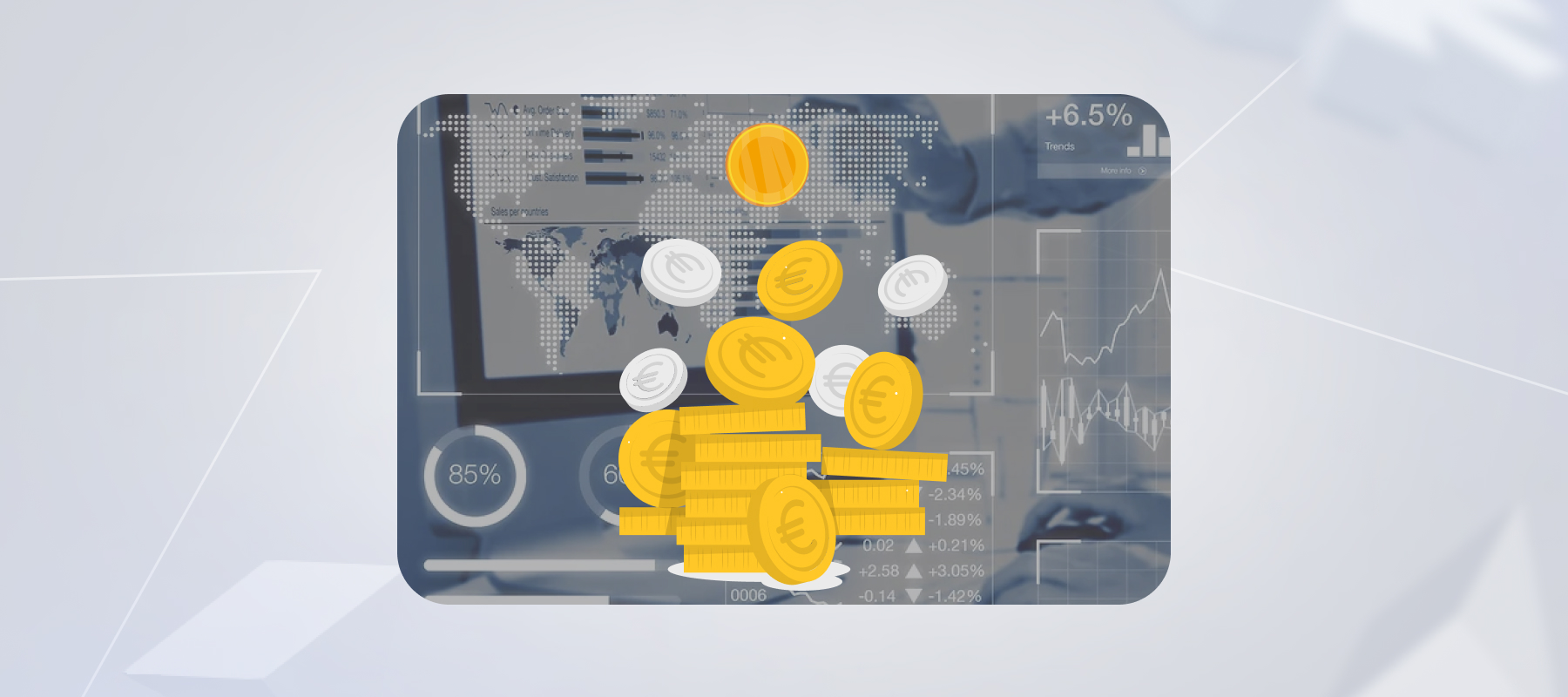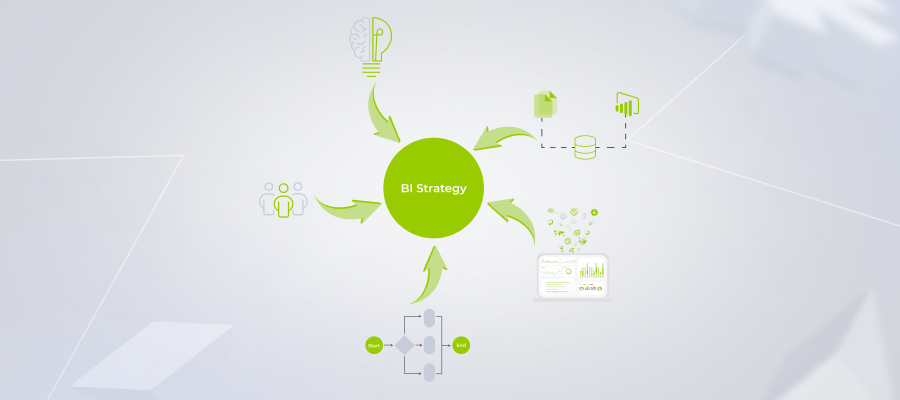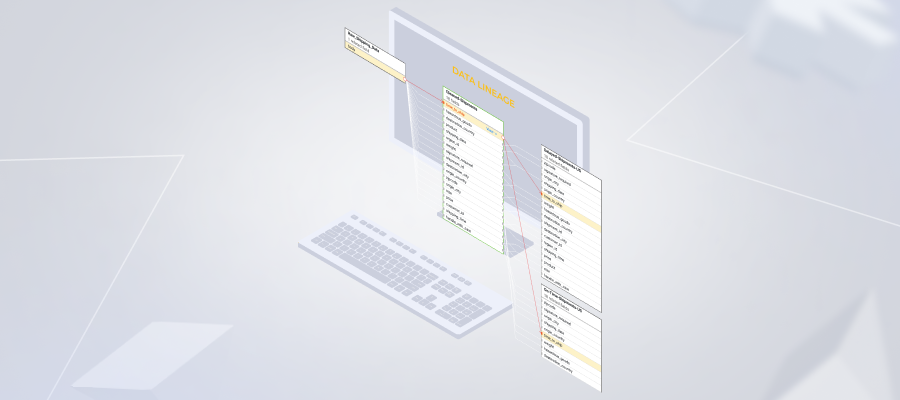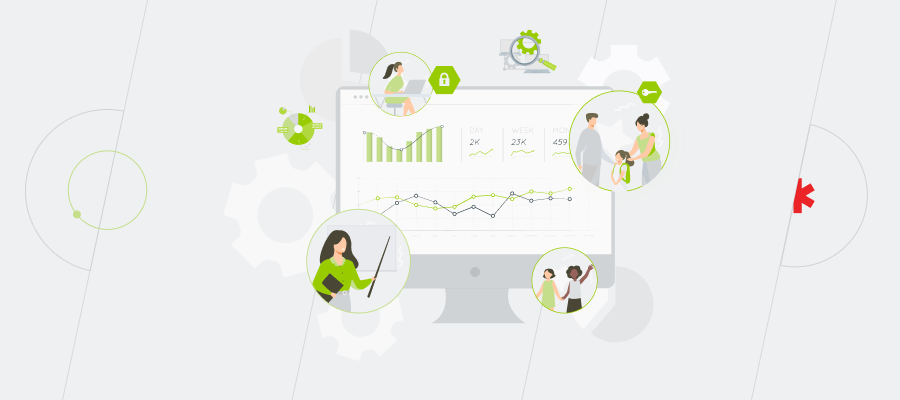Contents
- What is mobile business intelligence?
- Stepping into the age of action: ultimate benefits of mobile BI
- Who can benefit from mobile BI the most?
- Which roles are among those likely to be adopters of mobile BI solutions?
- Any flies in the ointment? Yes, several. But they can be extracted.
- Mobile BI apps: the power of BI, as and when it’s needed
From tech-heavy reporting projects to dedicated analytics tools, business intelligence has come a long way to becoming an industry standard among companies. However, despite the present proliferation of BI, businesses still struggle to seek out analytics excellence. The isolation of traditional BI tools continues to pose challenges, resulting in a mere 24% of data-driven organizations.
But why limit business intelligence to a desktop version, when your employees can leverage advanced analytics literally in the palm of their hand? Just like fitness or financial trackers, mobile business intelligence can seamlessly support existing data pathways and produce actionable insights on the go.
What is mobile business intelligence?
Mobile BI is software that extends desktop business intelligence applications and makes analytics accessible on a mobile device. Mobile BI software allows users to access and evaluate business metrics, and reports from smartphones and tablets.
Stepping into the age of action: ultimate benefits of mobile BI
Driven by increasing Bring-Your-Own-Device workplace practices and mobile computing, mobile business intelligence has experienced unbelievable growth over the last few years. In 2021, the mobile BI market size stood at over $11 billion. By 2030, it is expected to rack up over $38 billion. Let’s see which advantages of mobile business intelligence have secured their pride of place among adopters.
Real-time data access on the go
Traditional business intelligence solutions tie BI users to tools that are specifically allocated to corporate environments. When away, decision-makers cannot access valuable data, which hampers proactive response. Conversely, mobile BI provides the ability to make fast, well-informed decisions even when you are away from your desk, which is especially vital in industries such as finance and healthcare.
Offline access to data is among other differentiating mobile business intelligence benefits. Since mobile devices have wide in-memory caching capabilities, all data visualizations can be explored with no internet connection provided it’s a native mobile app.
Increased team collaboration
Since mobile BI directly reaches the hands of BI users, it ensures easier knowledge-sharing. On-the-go data analytics also matches well with growing remote practices, making sure each employee is in sync with other remote team members.
Mobile BI also allows for permanent, intermediary, or temporary access, which keeps your controls on par with desktop enterprise software.
Rich user experience
Supreme user experience is among other core benefits of mobile business intelligence. While smartphones come with inherent constraints such as small screens, tablets can pick up the slack as user-friendly mobile business intelligence solutions. Tablets make the best of both mobile design and desktop design, offering portable, always-on, and touch-capable analytics.
Compared to static desktop reports, portable BI solutions also usher in more interactivity, allowing the user to zoom, pinch, and swipe their way through insights. Moreover, native mobile applications can tap into device-specific features such as GPS, calendar integration, and QR-code scanning to expand analytical capabilities.
Maximized value of BI adoption
According to mobile business intelligence trends, CEOs that make data-driven decisions are 77% more likely to cultivate a company’s success. Cloud and big data mobile business intelligence confers accurate governing capabilities to other levels of the business hierarchy.
It means that a larger number of employees can have access to high-quality data, which facilitates the digital transformation of the company, gives the whole organization a vantage point, and increases operational efficiency.
Don’t miss out on the benefits of mobile BI
Who can benefit from mobile BI the most?
Businesses of all types and sizes can benefit from mobile business intelligence applications. However, according to the Mordor Intelligence report, the telecommunications and the software tech industries stand to gain the most benefits due to the presence of large corporations like Apple, Facebook, IBM, and Google.
Beyond the software market, retail, healthcare, and manufacturing are among other major players in the world of portable BI. Around 47% of retail respondents attest to the growing importance of mobile BI applications with 38% of healthcare providers sharing the enthusiasm. High adoption rates of mobile BI apps in these industries stem from increased demand for rapid data processing and high volumes of operational data.
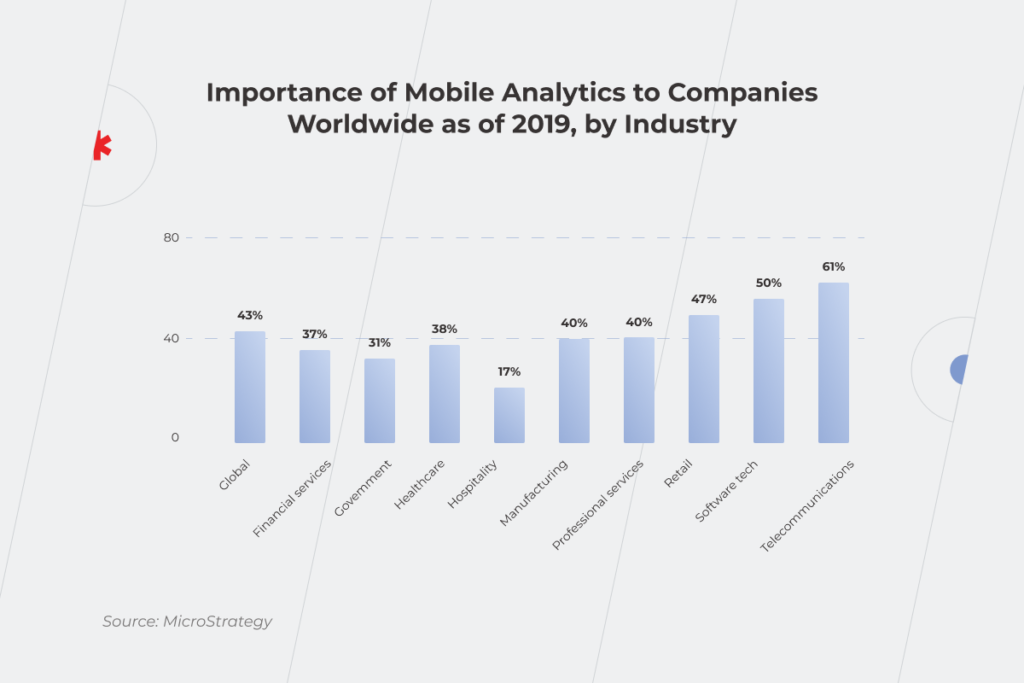
For example, retailers can use mobile augmented data analytics for on-the-move warehouse management, customer profiling, or store layout optimization. Healthcare providers use data analytics to support clinical decision-making, provide more personalized treatments, and increase healthcare accessibility for rural areas. Ultimately, a mobile BI strategy can both support the bottom line and boost customer satisfaction.
On a broader level, mobile analytics can support the following application matrix:
- Fraud and security management;
- Sales and marketing optimization;
- Predictive asset maintenance;
- Risk and compliance management;
- Customer relationship management;
- Supply chain analytics, and others.
Which roles are among those likely to be adopters of mobile BI solutions?
As for corporate levels, each employee — from decision makers to employees — can leverage all the necessary data without the hassle of corporate back and forth.
- Executives
Executives and senior-level managers spend a lot of time either in meetings or traveling for business, away from their desks and enterprise software. Having mission-critical information always on hand helps upper management explore data on business performance from any part of the world and make data-driven decisions, be it high-level forecasts or current business operations.
- Field workers
Field engineers and technicians have lots of projects on their plates — from company infrastructures such as railways and utility stations to customer sites. On-demand and on-the-go access to unified data analytics from all facilities helps field workers better prioritize tasks and keep an eye on prospective and current customers. Moreover, mobile analytics can be amplified with sensor and GPS data to schedule predictive maintenance activities or optimize routes.
- Line managers
Supervisors and team leaders can benefit from mobile data visualizations to get handy insights about staff, production lines, and ongoing operational activities. Lightweight visibility also helps first-line managers to respond proactively to any emergency and make important decisions faster and smarter.
- Sales representatives
Equipped with decision management and predictive analytics capabilities, a mobile BI tool can provide the latest sales information such as deal status or prospects to help salespeople prepare for the meeting or run analyses in any setting. All-in-one business intelligence mobile can also give salespeople a head start in customer data before any sales call.
Sales representatives in the retail sector, for example, can rely on a portable BI solution to predict the profitability of a new store without close supervision from the head management. In this case, the salesperson can calculate and select the correct location for new stores on the go, based on various parameters, including geography, demand, and others. If the input parameters meet the predefined benchmark, the BI solution greenlights the new location. Otherwise, the solution notifies the salesperson of the low profitability of the new sales point.
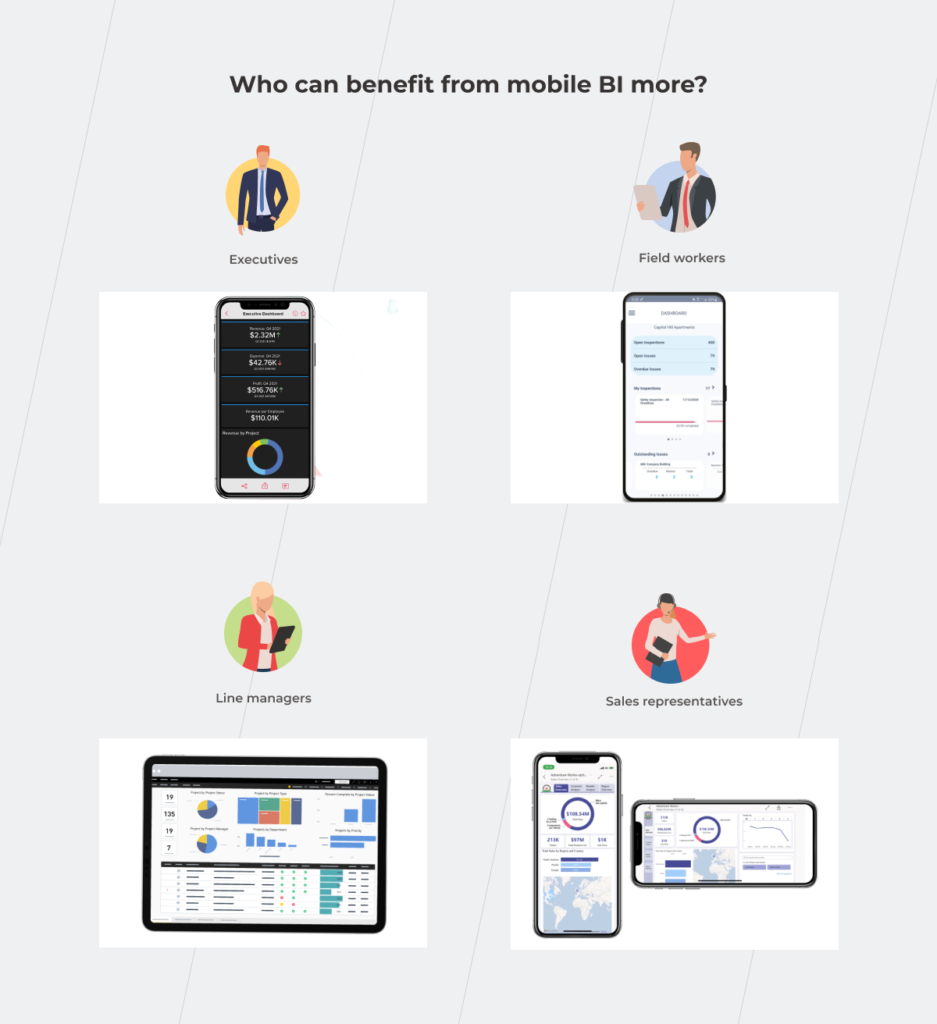
Any flies in the ointment? Yes, several. But they can be extracted.
Just like any technology, mobile business intelligence has a flip side. In this case, the core challenges of deploying portable analytics resonate with desktop BI. This is why accurate forecasting, data governance, and reporting need to be balanced against data security and quality followed by end-user training and cultural shifts.
However, mobile business intelligence software also poses some specific challenges that arise from the portable nature of analytics and mobile devices. With the right tech expertise though, you can make mobile work to your advantage and overcome general BI constraints.
Security issues
The smaller your device is, the easier it gets to misplace or forget it. Mobile devices also tend to get stolen or hacked, which increases the risk of a data breach. On average, hackers get their hands on 6.85 million accounts every day.
When away, mobile users can also expose their devices to data leaks through non-secure channels such as public Wi-Fi.
To keep hackers at bay, companies should embed robust data encryption, two-factor authentication, and biometrics-based access into portable enterprise devices. Mobile hardware should also meet both industry and internal security standards to ensure a consistent security policy on all company-owned devices.
Poor design
Although mobile BI is a natural extension of your desktop analytics software, a mobile version shouldn’t blindly replicate the desktop experience. You can keep the user experience consistent on both platforms, but wrap your solution into a mobile-focused experience.
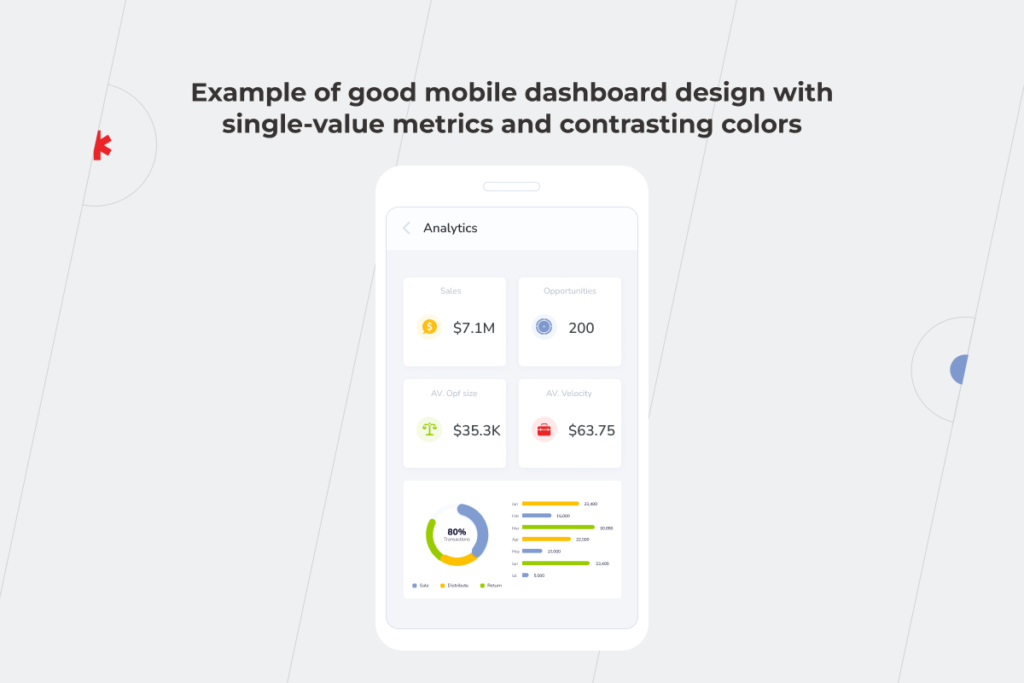
To recreate a typical mobile user flow, we recommend:
- Including app notifications and alerts;
- Employing voice recognition to access certain options hands-free;
- Equipping your applications with in-app guidance prompts;
- Tapping into native touch controls, including swiping, pinching, zooming, and others.
- Integrating the application with other communication channels to boost team collaboration;
- Embedding in-app analytics for further enhancements.
It might seem that achieving this kind of native-like user experience is a costly undertaking. However, a mobile BI version for a specific platform doesn’t require many resources compared to a standalone solution with multi-platform compatibility.
Neglecting the needs of your audience
By default, hand-held devices and desktop applications cannot deliver the same level of functionality. Therefore, you should adjust your mobile application according to the screen size and mobile constraints. While the main BI solution can provide visibility into data-rich charts and detailed reports, the portable solution should be optimized to display key metrics and alerts as well as share data via messages and emails.
Mobile BI apps: the power of BI, as and when it’s needed
As the world is quickly moving towards mobile, enterprise software also steps in to deliver better access and data visibility through mobile business intelligence. Mobile BI applications combine the analytical capabilities of desktop data processing and portability of mobile devices to equip companies with on-the-go data usage, risk management, and forecasting.
Although mobile business intelligence brings unique advantages to the table, its flexibility can play against you if handled irresponsibly. You should pay due diligence to necessary safeguards and user interfaces to eliminate risks and maximize mobile benefits.
Want us to take care of your mobile BI application? Get in touch.



